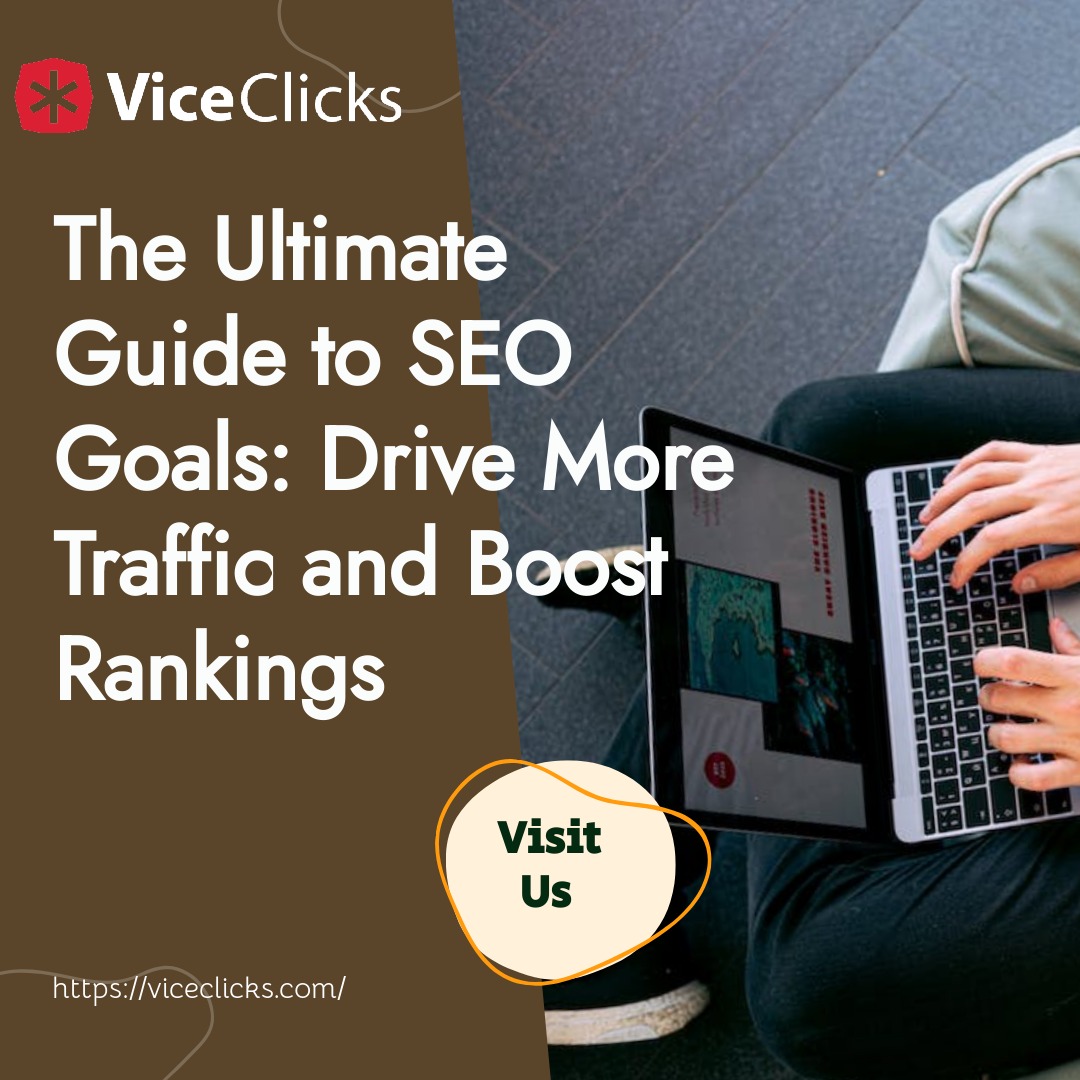The Ultimate Guide to SEO Goals: Drive More Traffi …

When it comes to search engine optimization (SEO), understanding the primary goal is crucial. Search engines like Google and Bing aim to assist users in finding the information they need and achieving their objectives. Whether it’s answering a simple question or conducting in-depth research, search engines strive to navigate the vast sea of online content and deliver relevant results. To ensure your website aligns with these goals, it’s important to optimize your SEO strategies. Here are nine key SEO goals to focus on:
- Optimize Your Internal Linking Structure
To enhance your SEO, you should optimize your website’s internal linking structure. This structure consists of internal hyperlinks that direct users to relevant pages or resources within your site. Apart from keeping visitors engaged, internal linking plays a crucial role in SEO. Make sure your internal linking structure is aligned with your sitemap, which is the official organization of your website submitted to search engines. This approach helps search engine crawlers understand your site’s structure and the connections between different pieces of information. By creating a logical and well-structured internal linking system, you can improve the overall strength of your website.
2. Increase Conversions
Tracking conversions is vital to evaluate the effectiveness of your marketing efforts and lead generation. It measures the actions users take that move them closer to making a purchase decision. Higher conversion rates indicate that your content provides value and meets users’ needs. By optimizing your conversion rates, you demonstrate to search engines like Google that your website delivers valuable information to visitors. This, in turn, positively impacts your rankings.
3. Increase Visitor Time on Pages
Engaging visitors and keeping them on your web pages for a longer duration is essential for SEO success. When users spend more time on your site, search engines interpret it as a sign that your content is valuable and worth reading. To achieve this, focus on improving the quality and length of your content. Longer, well-crafted articles tend to captivate readers and increase their time on your page. Additionally, employing best practices such as using relevant images, optimizing content structure, and implementing internal linking strategies can help retain visitors.
4. Decrease Your Bounce Rate
A high bounce rate occurs when visitors leave your website immediately after arriving. Several factors contribute to high bounce rates, including failing to answer search queries effectively, poorly written content, and unengaging page design. A high bounce rate indicates to search engines that your content lacks value, which can negatively impact your rankings. Reducing bounce rates involves improving visitor engagement and time spent on your pages. By accomplishing this, you can tackle two significant SEO goals simultaneously.
5. Maximize Page Speed
Fast-loading web pages play a crucial role in enhancing user experience. Slow-loading sites frustrate visitors and lead to increased bounce rates. To provide the best user experience, it’s important to optimize your page speed. One common cause of slow page speed is large image sizes and outdated image formats. To address this, optimize and compress your images. Maximizing page speeds not only improves user satisfaction but also helps increase traffic to your site.
6. Strengthen Domain Authority
Domain authority is a key factor that influences search engine rankings. It signifies the level of trustworthiness and authority associated with your website. When search engines perceive your site as authoritative, it receives preferential treatment in rankings. To improve your domain authority, focus on creating high-quality content that encourages user engagement. Increase comments, shares, and overall interactions with your content to establish authority and deliver better experiences to your audience.
7. Improve Your Backlink Strategy
Backlinks, or links from other websites that direct traffic to your site, are instrumental in SEO. They enhance your domain strength and indicate to search engines that your website is an authoritative and reliable source of information. Building a strong backlink strategy is essential for increasing your SEO authority. Consider reaching out to respected companies in your industry to guest blog on their site or focus on creating content that other websites naturally want to link to, such as interactive quizzes.
8. Increase Organic Traffic
Organic traffic refers to visitors who find your website through search engine results rather than through ads or direct links. A high volume of organic traffic indicates that your website ranks well on search engines and is easily discoverable by users. Monitoring and steadily increasing organic traffic is a key indicator of SEO success. Significant decreases in organic traffic can be a result of SEO penalties or a decline in domain authority. To boost organic traffic, optimize your content to align with search intent. Create valuable content that directly addresses the questions and queries users are searching for, thereby improving your chances of ranking higher in search results.
9. Increase E-Commerce Sales
For businesses involved in e-commerce, optimizing for SEO is crucial to drive direct monetization. By improving your product descriptions, names, and keyword targeting, you can rank higher in search engine results and attract potential customers. Focus on building a strong linking structure and creating content that targets high-value keywords related to your products. With effective SEO, you can increase organic traffic and drive sales through search engine queries.
In conclusion, understanding the primary goals of SEO is essential for optimizing your website and improving its visibility on search engines. By focusing on these nine key SEO goals, including optimizing your internal linking structure, increasing conversions, improving visitor time on pages, reducing bounce rates, maximizing page speed, strengthening domain authority, improving your backlink strategy, increasing organic traffic, and boosting e-commerce sales, you can drive more traffic to your site and achieve higher rankings in search engine results pages.
